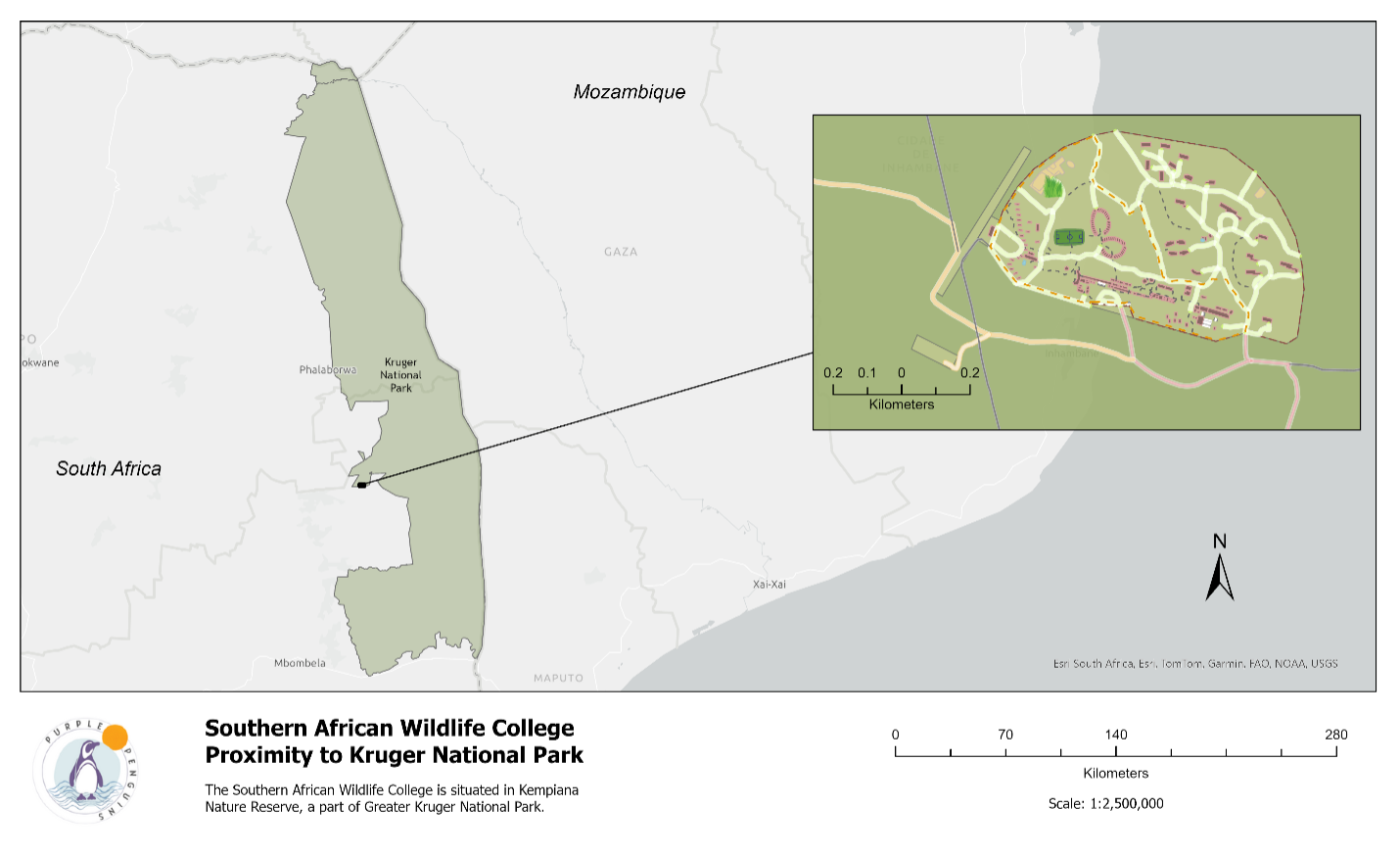

This project, led by Team Purple Penguins, aimed to enhance the productivity of the various operations on SAWC’s campus through GIS technology. The project was initiated with three main goals in mind: create a system to streamline the reporting of Safety, Health, Environment, and Quality (SHEQ) requests on campus, update the existing campus basemaps and provide comprehensive in person training and supplemental documentation to allow staff to use existing GIS solutions.
As the team worked closely with various staff members during the onsite visit, the project evolved to cover a greater scope of goals. Purple Penguins visited the campus just as they were preparing for an environmental audit. Through this experience, it became clear that the maintenance team is a champion for ensuring these audits go smoothly by tackling various tasks around campus. Invasive plant species needed to be treated either by pulling or cutting, reed needed to be applied to areas for protecting vegetation such tasks. It was apparent that a system was needed for monitoring the prevalence of invasive species and maintaining an inventory of trees providing carbon sequestration. Also, essential operational data, such as the water, sewage, electrical and Wi-Fi was not easily accessible to the maintenance team.
Purple Penguins found that the current evacuation maps were outdated and not easily accessed from each building. The updates the team provided for campus basemaps needed to be accessible to the staff, stakeholders and students in the form of a web application.
While implementing these various systems, it was determined that an automated backup script was required to ensure data safety. As the systems became more complex, Purple Penguins decided to create flowcharts for the handoff of the solutions to ensure the architecture was easily understood. As the project grew, the team insured that supplemental training materials must be provided for each solution to ensure its continued use.
SAWC was established in 1996 and became operational in 1997. It was established on land owned by the World Wildlife Fund for Nature, South Africa (WWF-SA) and managed as a contractual National Park by SANParks (Southern African Wildlife College, 2024b). The college is located in Greater Kruger National Park.
SAWC focuses on courses around natural resources management, field ranger training, responsible resources management, community, and youth development, K9 unit, aerial support, and Rural Initiatives for a Sustainable Environment (RISE) (Southern African Wildlife College, 2024a). To date, they have trained over 23,000 students, including 15,000 field rangers from 60 countries and 130 parks (Southern African Wildlife College, 2024a).
While implementing these various systems, it was determined that an automated backup script was required to ensure data safety. As the systems became more complex, Purple Penguins decided to create flowcharts for the handoff of the solutions to ensure the architecture was easily understood. As the project grew, the team insured that supplemental training materials must be provided for each solution to ensure its continued use.
Southern African Wildlife College Campus is located at Springvalley Farm 200KU Kempiana Nature Reserve, Orpen Road, Hoedspruit, 1380, South Africa.
